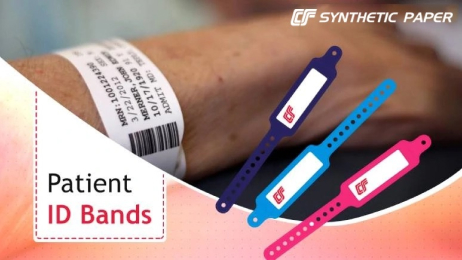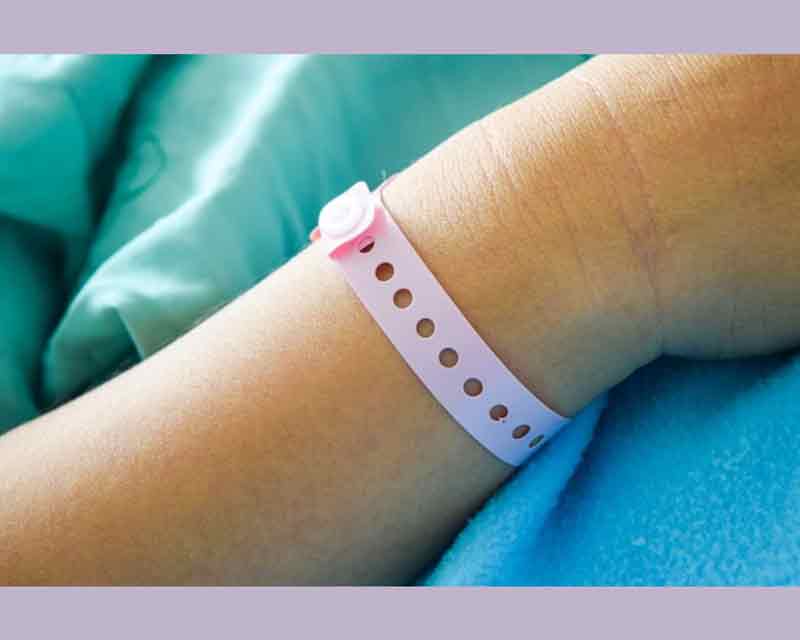Best Practices for Introducing a Patient Identification Band System in Your Clinic
Best Practices for Introducing a Patient Identification Band System in Your Clinic
Blog Article
A Comprehensive Guide to Patient Identification Band as a Vital Medical Supply
In the vast landscape of health care, Patient Identification bands have become an essential device (patient identification band). These bands, brimming with important data, work as the very first line of protection against medical errors and make certain smooth Patient care. As we begin to check out these medical supplies in depth, we discover the intricacies of their layout, usage, and effect on Patient safety and security, while meaning the assurance they hold for future clinical techniques
The Function of Patient Identification Bands in Medical Care
The importance of Patient Identification bands in health care can not be overstated. These simple wristbands offer as the primary method of making certain Patient identification, lowering the risk of medical errors and enhancing overall Patient security. They are an important tool in validating a client's identification prior to administering therapies, medications, or performing treatments. They are commonly color-coded to denote different health conditions, allergic reactions, or threat aspects, allowing for fast aesthetic Identification by healthcare professionals. In the hectic, high-pressure world of healthcare, where human lives go to risk, the benefits of such a straightforward yet efficient device are invaluable. Patient Identification bands offer a system of equilibriums and checks, a fail-safe against possible blunders, and a continuous pointer of the specific behind the treatment.
Decoding the Information on Patient Identification Bands
While they may appear easy at a look, Patient Identification bands lug important information that can greatly impact the program of a person's care. These bands generally display the Patient's name, date of birth, and an one-of-a-kind identifier, such as a clinical record number. These crucial items of details make certain correct Patient Identification, stopping clinical mistakes. Some bands may likewise consist of important clinical signals, such as allergy info, which can be critical in avoiding damaging reactions. Furthermore, the barcode discovered on these bands can be scanned to access the Patient's electronic health and wellness document, supplying a wealth of info to health care providers. Comprehending the details on these bands is necessary for safe and efficient Patient care.
Different Sorts Of Patient Identification Bands: A Closer Appearance
In the realm of Patient Identification, there are a number of kinds of bands that offer unique purposes. Barcode Identification Bands, RFID Tag-based Bands, and Color-Coded Patient Bands are the key classifications - patient identification band. Each kind presents special functions and benefits, which will certainly be analyzed in the following areas
Barcode Identification Bands
Using a considerable enhancement in Patient safety and security, barcode Identification bands have come to be a vital tool in the clinical field. These bands store vital Patient data in a barcode format that's quickly available with a check. This minimizes the possibility of human mistake in Patient Identification and information access, which is essential in medical treatments. The barcode system makes details like Patient name, medical background, allergies, and suggested drugs easily available. This guarantees fast and correct Patient Identification, specifically in emergency scenarios where every 2nd matters. Barcode Identification bands are additionally very easy to utilize, resilient and cost-efficient, making them a vital part of modern-day health care. Importantly, these bands have considerably decreased medical mistakes and improved Patient security.
RFID Tag-based Bands
Another innovative approach in Patient Identification is making use of RFID Tag-based bands. These bands use Radio Regularity Identification (RFID) technology to give a safe and secure form of Patient Identification. Unlike barcodes, RFID tags can store a lot even more information and can be reviewed without straight line of view. This means that medical care professionals can access vital Patient details, also if the band is obscured by clothes or bedding. RFID tags can be reprogrammed with upgraded info as needed, enhancing their capability. These bands can be extra pricey than various other forms of Identification, and there are personal privacy issues linked with the use of RFID technology. In spite of these challenges, RFID tags use significant potential for enhancing Patient security and performance in healthcare.
Color-Coded Patient Bands
Color-coded Patient bands stand as a basic yet reliable tool in Patient Identification. These bands, prevalent in centers and health centers, make use of various colors to show different Patient threats, conditions or allergic reactions, making sure immediate acknowledgment by healthcare experts. Thus, the color-coded Patient band system is an important part of Patient safety and security and efficient health care distribution.

Usage of Patient Identification Bands: Treatments and Protocols
In healthcare settings, making use of Patient Identification bands plays an essential function in making certain Patient safety and security and minimizing medical mistakes. These bands, usually constructed from long lasting, hypoallergenic material, are affixed to the Patient's wrist or ankle joint, presenting important information such as name, day of birth, and an one-of-a-kind identifier. The process is typically implemented during admission, with the information double-checked for accuracy. For newborns, bands are affixed to both the infant and mommy to avoid mismatches. In senior care, 2 bands may be made use of for patients with dementia to make certain correct Identification. Complying with these protocols assists to prevent Patient misidentification, a precursor to major medical mistakes. This practice is a testament to the vital nature of Identification bands in Patient treatment.
The Effect of Identification Bands on Patient Safety
Identification bands play a crucial role in preserving Patient security in healthcare settings. Their use can considerably reduce medical mistakes by guaranteeing that the appropriate Patient receives the proper treatment. Moreover, these simple devices add to enhancing the high quality of treatment by offering an extra layer of confirmation to Patient identities.
Decreasing Clinical Errors
Patient Identification bands have actually arised as a vital device in significantly minimizing these mistakes. Crucially, these bands make certain that every Patient is correctly matched with their medical documents, tests, and treatments, thereby substantially minimizing the danger of medical mistakes. By ensuring precise Patient Identification, these bands add to boosted Patient safety and security, constructing trust and confidence in the healthcare system.
Making Sure Correct Therapy
Protecting Patient safety, Identification bands play a pivotal role in making certain the correct administration of treatments. They provide a simple yet effective method for appropriately identifying patients and matching them to their clinical records. This minimizes the danger of treatment errors, particularly in high-pressure circumstances where blunders can have serious effects. These bands consist of crucial information such as the Patient's name, day of birth, and one-of-a-kind Identification number. As a result, they help with accurate cross-referencing with digital health and wellness documents, prescription orders, and step-by-step schedules. Therefore, the opportunity of misdiagnosis, medication errors, or procedural mix-ups is dramatically decreased. Basically, Patient Identification bands work as a crucial secure in the medical care setting, dramatically adding to Patient security and making certain appropriate treatment.

Enhancing High Quality Care
While they might appear insignificant, patient Identification bands considerably improve the quality of treatment provided read this article in healthcare setups. They are a necessary tool in making certain Patient safety as a result of their ability to offer immediate access to crucial details. This includes the Patient's case history, allergies, and present treatment strategies. Utilizing these bands reduces the risk of medical mistakes, such as wrong medicine administration or operations. Furthermore, they strengthen the personal connection in between doctor and Patient, increasing trust and communication. This easy, cost-efficient band thus plays a necessary duty in Patient safety, considerably affecting the general top quality of care. The adoption of Patient Identification bands is, consequently, a needed procedure in all healthcare settings.
Discovering the Future of Patient Identification Bands in Medical Practice

Final thought
Patient Identification bands play a vital role in medical care, making certain precise Patient Identification and minimizing clinical errors. These important tools increase security and provide immediate accessibility to critical wellness information. The assimilation of digital and biometric innovations can even more improve Patient safety, treatment high quality, and personal privacy. As clinical methods continue to evolve, Patient Identification bands will certainly stay an essential part of the healthcare system.
While they might appear simple at a look, Patient Identification bands bring vital details that can significantly influence the training course of a person's treatment.Color-coded Patient bands stand as a simple yet efficient tool in Patient Identification.In medical care setups, the use of Patient Identification bands plays a crucial function in guaranteeing Patient safety and reducing clinical mistakes. In essence, Patient Identification bands serve as an important safeguard in the health Home Page care setup, considerably contributing to Patient safety and security and making sure proper therapy.
Patient Identification bands play an indispensable function in health care, making sure exact Patient Identification and decreasing medical errors.
Report this page